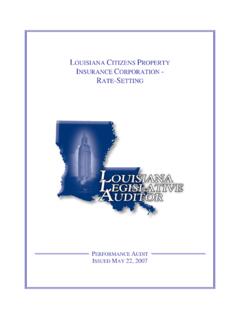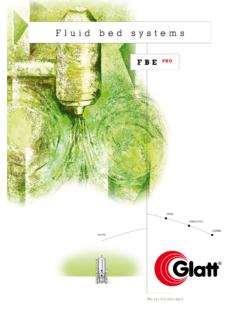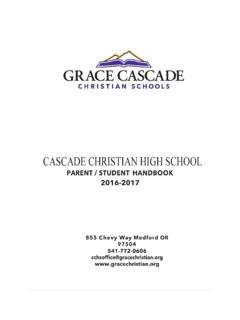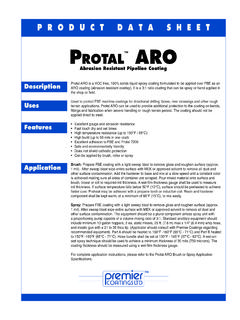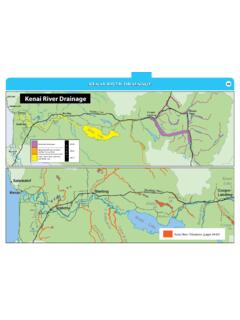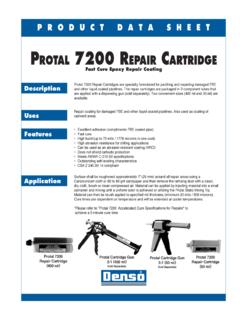Transcription of STATE AND FEDERAL AGENCY RESOURCES - files.constantcontact.com
1 STATE AND FEDERAL AGENCY RESOURCES For the Hurricane Harvey Long-Term Economic Recovery WorkshopsParticipating AgenciesTexas General Land OfficeTexas Water Development BoardTexas Department of AgricultureTexas Division of Emergency Management Texas Workforce Small Business Department of Economic Development Administration Rural DevelopmentFederal Emergency Management AGENCY Department of LaborFederal Reserve Department of Housing & Urban Development Environmental Protection AGENCY Texas Department of InsuranceDocument compiled by EDA and the Economic Recovery Support FunctionTABLE OF Philanthropic FEDERAL Reserve BankTexas Department Of Insurance3 Tex as General Land Small Business Administration6 Texas Water Development Economic Development Rural Development11 Texas Department of Agriculture21 Texas Workforce Commission22 Environmental Protection Agency241119 Texas Division of Emergency ManagementAdditional ResourcesDisability IntegrationNational Parks Service 29323 FEMA Philanthropic AdvisorThe goal of the Philanthropic Advisor is to increase opportunities for philanthropic partners to target and leverage funding to address unmet recovery needs of survivors and communities Using the following strategies to accomplish this goal: Identify and establish partnerships with philanthropic funding and other resourcesavailable to address unmet needs.
2 Gather information and offer assistance on existing unmet needs that could besupported with philanthropic funding and RESOURCES . Connect philanthropic partners and potential funders/ RESOURCES with opportunities toaddress unmet recovery Reserve Bank Expertise from Kevin Dancy, Community Development Specialist with the FederalReserve Bank in Houston. Works with banks and foundations to align capital to serve communities most in need. Topics covered will include small business, affordable housing, economicdevelopment, issues impacting low-to-moderate income (LMI) individuals andcommunities, and disaster areas and the Community Reinvestment Act (CRA).Texas Department of Insurance The Texas Department of Insurance can help consumers and businesses withinsurance claims. TDI connects consumers and businesses to FEMA, National FloodInsurance Program (NFIP), and insurance companies for direct assistance with theirclaims issues. TDI has helped more than 900 Texans recover more than $ million on Harveyclaims.
3 TDI also offers helpful RESOURCES on our website and in print that explain how to fileclaims after a disaster, as well as information about all types of insurance, and of ContentsCOMMUNITY DEVELOPMENT & REVITALIZATIONHURRICANE HARVEY The GLO stands ready tohelp our statemaximize the use of this disaster recovery funding to build back stronger and more resilientcommunities. George P. Bush, CommissionerWe Rebuild Texas CommunitiesThe Texas General Land Office Community Development and Revitalization program provides long-term recovery assistance to the people of Texas as they rebuild after disasters. the lead STATE AGENCY for administering more than $9 billion in Community Development Block Grant for Disaster Recovery (CDBG-DR) funds allocated by the United States Department of Housing and Urban Development (HUD). These funds have been allocated for recovery following Hurricanes Rita, Dolly, and Ike, the 2011 wildfires, the 2015 and 2016 floods and Hurricane Harvey.
4 HURRICANE HARVEY CDBG-DR OVERVIEWH urricane Harvey marked the sixth major disaster declaration to hit Texas within the last three years. The hurricane impacted million people living in 49 counties with wind gusts up to 150 mph and as much as 60 inches of rain the area. As a result of the devastation, the STATE of Texas has received allocations of $ million and $ billion to date. he GLO estimates over 1 million homes impacted and over $6billion in LONG-TERM RECOVERYThe GLO s strategy for administration of the program allow for as much local control as possible. The GLO does not add any additional regulationsbeyond HUD projects are selected at the local level toemphasize local GLO has developed new, innovative programs toexpedite the recovery General Land Office4 Table of ContentsOVERVIEW:$ BILLIONOn September 8, President Donald J. Trump signed the Continuing Appropriations Act2018 and theSupplemental Appropriations for Disaster Relief Requirements Act of 2017, which included $ billion to support response and recovery from disasters across the published FEDERAL Register on February 9, 2018 allocating $ billion to the requires that 80% of the allocation must benefit HUD-identified mostimpacted counties and zip of the funds must be spen on lowto moderateincomeThe GLO anticipatesadditional allocationsfrom the additional $ billion recently appropriated by Congress for 2017 disastersRECOVERY PROGRAMS$ MILLIONn December 27, 2017 HUD published the FEDERAL Register providing guidelines for a $ million allocation$ BILLIONMOST IMPACTEDCOUNTIES: Harris, Jefferson, Orange, Galveston, Fort Bend, Brazoria, Montgomery, Liberty, Hardin, Chambers, Aransas, Wharton, San Patricio, San Jacinto, Nueces Victoria ZIP CODES.
5 78945, 77423, 77612, 78934, 75956, 77632, 75979, 7414, 77335, 7837777979 1-888-958-0877512-463-5001 Texas General Land Box 12873 Austin, TX 78711-28735 Table of SMALL BUSINESS ADMINISTRATION FACT SHEET - DISASTER LOANSTEXAS Declaration #15274 & #15275 (Disaster: TX-00487) Incident: HURRICANE HARVEY occurring: August 23 through September 15, 2017 in the Texas counties of: Aransas, Austin, Bastrop, Bee, Brazoria, Caldwell, Calhoun, Chambers, Colorado, DeWitt, Fayette, Fort Bend, Galveston, Goliad, Gonzales, Grimes, Hardin, Harris, Jackson, Jasper, Jefferson, Karnes, Kleberg, Lavaca, Lee, Liberty, Matagorda, Montgomery, Newton, Nueces, Orange, Polk, Refugio, Sabine, San Jacinto, San Patricio, Tyler, Victoria, Walker, Waller for economic injury only in the contiguous Texas counties of: Angelina, Atascosa, Brazos, Brooks, Burleson, Guadalupe, Hays, Houston, Jim Wells, Kenedy, Live Oak, Madison, Milam, San Augustine, Shelby, Travis, Trinity, Washington, Williamson and for economic injury only in the contiguous Louisiana parishes of: Beauregard, Calcasieu, Cameron, Sabine & Vernon Application Filing Deadlines: Physical Damage: November 30, 2017 Economic Injury: May 25, 2018 If you are located in a declared disaster area, you may be eligible for financial assistance from the Small Business Administration (SBA).
6 What Types of Disaster Loans are Available? Business Physical Disaster Loans Loans to businesses to repair or replace disaster-damaged property owned by the business, including real estate, inventories, supplies, machinery and equipment. Businesses of any size are eligible. Private, non-profit organizations such as charities, churches, private universities, etc., are also eligible. Economic Injury Disaster Loans (EIDL) Working capital loans to help small businesses, small agricultural cooperatives, small businesses engaged in aquaculture, and most private, non-profit organizations of all sizes meet their ordinary and necessary financial obligations that cannot be met as a direct result of the disaster. These loans are intended to assist through the disaster recovery period. Home Disaster Loans Loans to homeowners or renters to repair or replace disaster-damaged real estate and personal property, including automobiles.
7 What are the Credit Requirements? Credit History Applicants must have a credit history acceptable to SBA. Repayment Applicants must show the ability to repay all loans. Collateral Collateral is required for physical loss loans over $25,000 and all EIDL loans over $25,000. SBA takes real estate as collateral when it is available. SBA will not decline a loan for lack of collateral, but requires you to pledge what is available. What are the Interest Rates? By law, the interest rates depend on whether each applicant has Credit Available Elsewhere. An applicant does not have Credit Available Elsewhere when SBA determines the applicant does not have sufficient funds or other RESOURCES , or the ability to borrow from non-government sources, to provide for its own disaster recovery. An applicant, which SBA determines to have the ability to provide for his or her own recovery is deemed to have Credit Available Elsewhere. Interest rates are fixed for the term of the loan.
8 The interest rates applicable for this disaster are: No Credit Available Credit Available Elsewhere Elsewhere Business Loans Non-Profit Organization Loans Economic Injury Loans Businesses and Small Agricultural Cooperatives N/A Non-Profit Organizations N/A Home Loans Small Business Administration6 Table of ContentsWhat are Loan Terms? The law authorizes loan terms up to a maximum of 30 years. However, the law restricts businesses with credit available elsewhere to a maximum 7-repay. What are the Loan Amount Limits? Business Loans The law limits business loans to $2,000,000 for the repair or replacement of real estate, inventories, machinery, equipment and all other physical losses. Subject to this maximum, loan amounts cannot exceed the verified uninsured disaster loss. Economic Injury Disaster Loans (EIDL) The law limits EIDLs to $2,000,000 for alleviating economic injury caused by the disaster.
9 The actual amount of each loan is limited to the economic injury determined by SBA, less business interruption insurance and other recoveries up to the administrative lending limit. EIDL assistance is available only to entities and their owners who cannot provide for their own recovery from non-government sources, as determined by the Small Business Administration. Business Loan Ceiling The $2,000,000 statutory limit for business loans applies to the combination of physical, economic injury, mitigation and refinancing, and applies to all disaster loans to a business and its affiliates for each disaster. If a business is a major source of employment, SBA has the authority to waive the $2,000,000 statutory limit. Home Loans SBA regulations limit home loans to $200,000 for the repair or replacement of real estate and $40,000 to repair or replace personal property. Subject to these maximums, loan amounts cannot exceed the verified uninsured disaster loss.
10 What Restrictions are there on Loan Eligibility? Uninsured Losses Only uninsured or otherwise uncompensated disaster losses are eligible. Any insurance proceeds which are required to be applied against outstanding mortgages are not available to fund disaster repairs and do not reduce loan eligibility. However, any insurance proceeds voluntarily applied to any outstanding mortgages do reduce loan eligibility. Ineligible Property Secondary homes, personal pleasure boats, airplanes, recreational vehicles and similar property are not eligible, unless used for business purposes. Property such as antiques and collections are eligible only to the extent of their functional value. Amounts for landscaping, swimming pools, etc., are limited. Noncompliance Applicants who have not complied with the terms of previous SBA loans may not be eligible. This includes borrowers who did not maintain flood and/or hazard insurance on previous SBA loans.

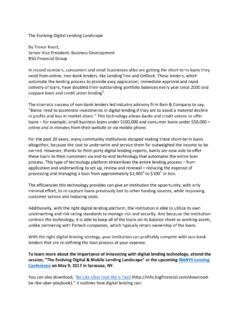





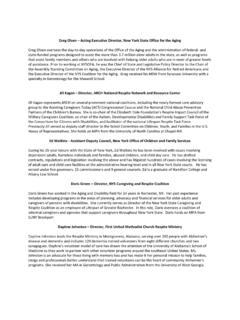

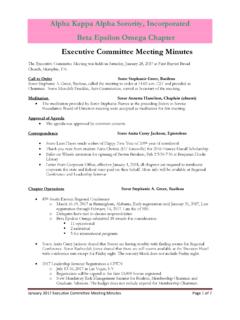
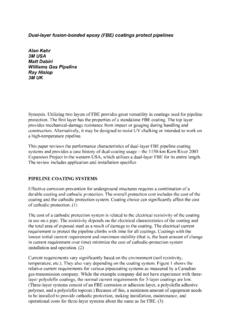
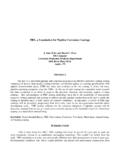
![p I^ lU- ] 10 - Louisiana](/cache/preview/f/7/3/f/7/d/c/4/thumb-f73f7dc47bb283cf34089f83231d0637.jpg)
